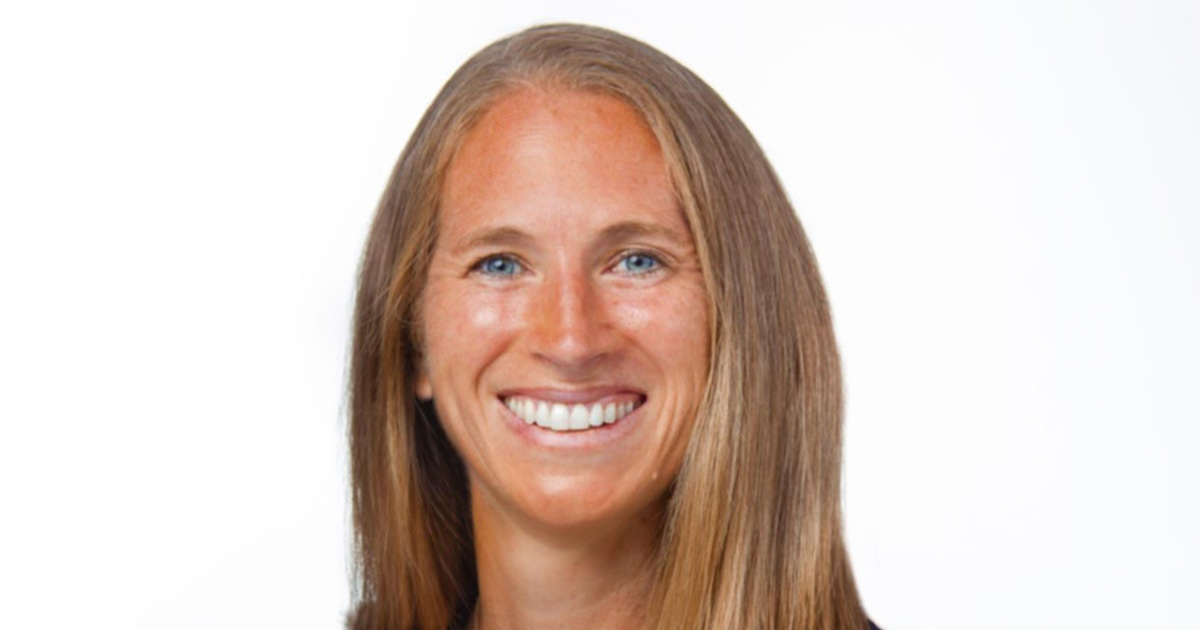
What does your average workday look like? Is it spent jumping from one task to the next? Are your only breaks from the computer trips to the coffeepot? Does one day differ from the next? If so, do you think that aiming for a structured, optimized workday is a fantastical waste of time? And if so, did you know there’s an entire field of cognitive science called chronobiology that would disagree with you?
Brittany Loney, Ph.D., is the founder and director of the Elite Cognition and Human Optimization (ECHO) program, a training program designed to put a brain-centered approach on human performance. The ECHO program is part of Core One, a consultancy that works with government and military organizations to create productive, mission-ready cultures. Within that scope, ECHO’s mission is to improve cognitive performance with field-tested tactics and research-based strategies.
One of ECHO’s most popular workshops is called Optimal Day. Its purpose is to help people understand their brains’ ebbing and flowing cycles of neuroactivity—what chronobiologists call the circadian rhythm—and use those changing cycles to their advantage depending on the time of day.
“[It’s a] roughly 24-hour rhythm, and it’s based somewhat on the light-dark cycle,” Loney says. “It affects different fluctuations in our body temperature, our hormones, and all of that, and that actually affects what time is best for certain things, because there are actually times associated with optimal performance for mental and physical tasks.”
If your workday starts foggily and ends groggily, Loney’s science-based solution might be for you. Here’s how she formats an Optimal Day.
How to Optimize Your Day: Have an Intentional Morning
Wake up – 9 a.m.
Loney says that your morning offers the most “controllable” time you’ll have in any day, which means that’s the time to be the most intentional with your habits. Instead of checking your email or Instagram the moment you wake up, fall into a productive morning routine that helps set the tone for a productive day.
“Think about what that routine looks like for you,” she says. “It could be podcasts; it could be a workout; it could be a quick walk with a pet. I do cold showers in the morning and get a nice little dopamine kick. Then, I listen to a three- to five-minute [reflection] from the Heroic app to get my mind right. Some people listen to a religious reading, like a devotional, that type of thing. But really, it’s getting intentional about your morning.”
Cognitive Prime Time
9 a.m. – 1 p.m.
Your brain becomes fully awake around 9 a.m., the beginning of your “cognitive prime time.” This is when your body temperature and hormones put your brain in the optimal state for focusing on complex, mental work—or, what Loney calls “deep work”—such as writing, analyzing or strategizing. This four-hour period consists of a recurring ultradian rhythm, which is like a 90-minute mental sprint followed by a five- to 20-minute mental recovery. Loney recommends developing a habit she calls “deep work sprints” that can help you make the most of the first half of your workday.
“What most people do is they try to work through the entire cognitive prime time, like four hours straight,” she says. “Well, what happens is your brain cannot maintain that depth of focus for that long unless you’ve trained it over many, many years to be able to do that. And the cap for deep work each day is about four hours. So we recommend every 90 minutes to take some sort of break.”
What you do during this break is critical. If you’re browsing social media or checking emails, that’s not mental recovery—that’s like trying to rest your muscles by doing pushups in between bench presses. Loney suggests physical activities, such as a short walk around the office or a few body weight workouts, to give your brain (and eyes) a break while also preparing your mind for the next 90-minute deep work sprint.
Achieving optimal productivity during your deep work sprints depends on “not just doing things the right way, but doing the right things,” Loney says. She recommends two strategies:
The Pareto Principle
Also known as the 80/20 rule, the Pareto Principle states that 80% of outcomes come from 20% of causes. In terms of productivity, this means 20% of your efforts produce 80% of your results. Loney encourages people to leverage that statistic to prioritize tasks and distribute their mental energy evenly: “You might have… 20 items on your to-do list,” she says. “Pick the top 20% of those. If it’s 20, you’d have five. Then, out of that success list of five, you’re gonna then pick the top 20% of the five, which means you’re just picking one item—that is your one most important thing for the day, and that should be done during cognitive prime time.”
Mission Viable Product
The ECHO program adapted the Lean Startup’s principle of attaining the “minimum viable product” into what Loney calls the “mission viable product.” To illustrate this principle at work, she uses a delicious example: If you’re tasked with making a doughnut, spend your cognitive prime time on making it edible. An edible doughnut “meets mission.” Although a doughnut with sprinkles might look better, Loney says to add them later in the day since sprinkling is a less complex process—and 9 a.m. to 1 p.m. is all about getting the hard work done. “Get [your product] to MVP status and then move on,” she says, “because the conveyor belt is going.”
Cognitive Dip
1 p.m. – 3 p.m.
After a morning of hard work, your circadian rhythm slips into the “post-lunch crash,” or what Loney calls the “cognitive dip.” Biologically speaking, this is when your body temperature starts dropping rapidly and puts you in a “sleep gate”—a window of time when your body wants to go to sleep. Since most companies don’t approve of siestas or desk naps, Loney recommends filling these two hours with menial tasks, such as scheduled status meetings, filling out timesheets or archiving old files. Better yet, if possible, take a longer midday break. Loney says she’s worked with top military leaders who have integrated these breaks into their schedules to great success.
“Often, people will say they don’t have time, and I always tell them if some of the top military leaders in our nation have time, [then] it’s just about priorities and believing it works,” she says. The break doesn’t have to be long. Just getting five to 15 minutes of sunlight between 1-3 p.m. can have a profound impact on your entire day, Loney says, since sunlight will positively adjust your circadian rhythm and maybe even help you sleep better that night.
“Also during this time, try to exercise or move,” Loney says. “A brisk walk outside, moderate cardio [for] 10 to 20 minutes if you have it. Just get that body moving and the blood flowing because that will start to mitigate the depth of that 1 to 3 p.m. dip and make you more productive in the afternoon hours.”
For a true Optimal Day, this should also be your last window for coffee. Loney says that your body needs plenty of time to digest caffeine, and drinking coffee or other energy drinks after 3 p.m. can delay your ability to fall asleep that night.
Reboot
3 p.m. – 10 p.m.
The last part of your circadian rhythm before bed is called the wake maintenance zone, or as it’s branded in the Optimal Day format, “the reboot.” From 3-10 p.m. your body temperature is rising to the highest point it will be during the day.
“So during this time, what we’re good at mentally is alertness, vigilance, attention to detail and information review,” Loney says. “You don’t have to go do the simple tasks like you do during that 1 to 3 p.m., but they shouldn’t be your most complex tasks, because you’re probably also running into decision fatigue and cognitive fatigue from the day as a whole anyway.”
Loney recommends taking breaks more often in the afternoon than in the morning. While your morning brain works optimally with 90-minute sprints, your brain in the afternoon will work better with 60-minute sprints.
And as the workday winds down, whether at 5 p.m. or later, Loney emphasizes the importance of end-of-day rituals, which demarcate your work life as separate from home life while also giving your brain some much-needed relief after a day of deep work. Her top suggestions:
Establish a work-to-home transition:
Your workday needs a hard stop—your brain can’t optimize for home or family life if it’s still in work mode. This habit might be silencing phone notifications on your work email, shutting the door to your home office or listening to a meditative podcast or audiobook on your commute home.
- Watch the sunset: Loney says that, from an evolutionary standpoint, the setting sun signals your brain that it’s almost time to sleep.
- Avoid caffeine and alcohol: “Even one drink within a few hours of going to sleep will affect your ability to enter deep sleep,” Loney says.
- Have a “digital sunset”: Loney recommends putting your phone or other screens away at least 30 minutes before you go to bed. This helps your mind relax and focus on sleep preparation instead of stressing over tomorrow’s to-do list.
Of course, ECHO’s Optimal Day program is simply a systematic guideline. Life isn’t always optimal, so be prepared for unknown factors to disrupt your day—just remember that even a bad day can be optimized, and there’s always another day tomorrow.
“[My day is] not always optimal, but I can always make it a little bit better than just letting the world determine what’s going to happen,” Loney says. “I think that’s the key: Take control of what you can. World will happen. Don’t get mad. Just plan what you can around that. And don’t just say it’s got to be all or nothing.”
This article originally appeared in the November/December issue of SUCCESS Magazine. Photo courtesy of Brittany Loney, Ph.D.




